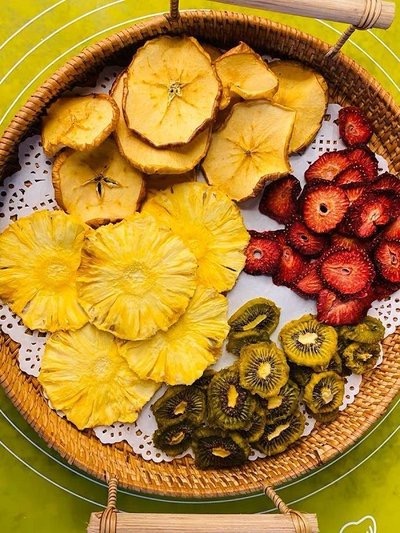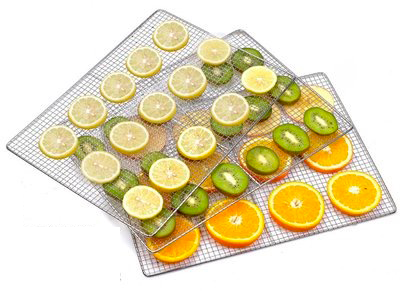
Content Menu
● Introduction
● Understanding Food Drying Machines
● Benefits of Using Food Drying Machines
● Key Features of Food Drying Machines
● Applications of Food Drying Machines
● Choosing the Right Food Drying Machine
● Future Trends in Food Drying Technology
● Conclusion
● Frequently Asked Questions
>> 1. What types of food can be dried using a food drying machine?
>> 2. How does a food drying machine differ from a conventional oven?
>> 3. Are food drying machines energy efficient?
>> 4. Can I use a food drying machine for commercial purposes?
>> 5. What maintenance is required for food drying machines?
Introduction
Food preservation is a critical aspect of the food industry, ensuring that products remain safe and nutritious for consumption over extended periods. Among various preservation methods, food drying stands out as one of the oldest and most effective techniques. With advancements in technology, food drying machines have become essential tools for both home cooks and commercial food processors. This article explores the significance of food drying machines, their benefits, and how they contribute to sustainable food practices.

Understanding Food Drying Machines
Food drying machines, also known as dehydrators, are appliances designed to remove moisture from food items. They operate by circulating warm air around the food, effectively evaporating moisture while retaining flavor and nutrients. There are several types of food drying machines, including electric dehydrators, solar dehydrators, and commercial-grade machines. Each type has its unique features and applications, catering to different needs in food preservation.
Benefits of Using Food Drying Machines
The advantages of using food drying machines are numerous. Firstly, they help preserve the nutritional value of food. Unlike canning or freezing, which can alter the texture and taste of food, drying maintains the original flavor and nutrients. Secondly, dried foods have a significantly extended shelf life, making them ideal for long-term storage. This not only reduces food waste but also provides a cost-effective solution for consumers and businesses alike.
Moreover, food drying machines offer versatility. They can be used to dry a wide range of products, from fruits and vegetables to meats and herbs. This adaptability makes them valuable in both home kitchens and commercial settings, where diverse food items need preservation.
Key Features of Food Drying Machines
When selecting a food drying machine, several key features should be considered. Temperature control is crucial, as different foods require specific drying temperatures to achieve optimal results. Additionally, effective airflow management ensures even drying, preventing hotspots that can lead to uneven results.
Capacity is another important factor. Home users may prefer smaller machines, while commercial operations often require larger units to handle bulk quantities. Energy efficiency is also a significant consideration, as many modern machines are designed to minimize power consumption while maximizing drying efficiency.
Applications of Food Drying Machines
Food drying machines find applications in various sectors. In home kitchens, they allow individuals to create healthy snacks, such as dried fruits and vegetable chips. In commercial settings, food processors utilize these machines to produce dried herbs, jerky, and other preserved products.
For instance, a local farm may use a food drying machine to process surplus fruits into dried snacks, extending their market reach and reducing waste. Case studies of successful food drying operations highlight the economic benefits and sustainability of this practice.

Choosing the Right Food Drying Machine
Selecting the right food drying machine involves considering several factors. Users should assess their specific needs, such as the types of food they plan to dry and the volume of production. Popular brands like Excalibur and Nesco offer a range of models catering to different requirements, from home use to commercial applications.
Maintenance is also essential for ensuring the longevity of the machine. Regular cleaning of trays and ensuring proper airflow can significantly enhance performance and durability.
Future Trends in Food Drying Technology
The future of food drying technology looks promising, with innovations continually emerging. Smart dehydrators equipped with digital controls and connectivity features are becoming more common, allowing users to monitor and adjust settings remotely. Additionally, there is a growing emphasis on sustainability, with manufacturers focusing on eco-friendly materials and energy-efficient designs.
As the demand for healthy, preserved foods increases, the role of food drying machines in the food industry will continue to expand, promoting sustainable practices and reducing food waste.
Conclusion
Food drying machines play a vital role in food preservation, offering numerous benefits for both home cooks and commercial processors. By understanding their features and applications, users can make informed decisions that enhance their food preservation efforts. As technology advances, these machines will become even more integral to sustainable food practices, ensuring that we can enjoy nutritious, preserved foods for years to come.

Frequently Asked Questions
1. What types of food can be dried using a food drying machine?
A variety of foods including fruits, vegetables, herbs, and meats can be dried effectively.
2. How does a food drying machine differ from a conventional oven?
Food drying machines use lower temperatures and controlled airflow to remove moisture without cooking the food.
3. Are food drying machines energy efficient?
Yes, many modern food drying machines are designed to be energy efficient, using less power than traditional methods.
4. Can I use a food drying machine for commercial purposes?
Absolutely, there are commercial-grade food drying machines designed for large-scale food processing.
5. What maintenance is required for food drying machines?
Regular cleaning of trays and ensuring proper airflow are essential for maintaining performance.












